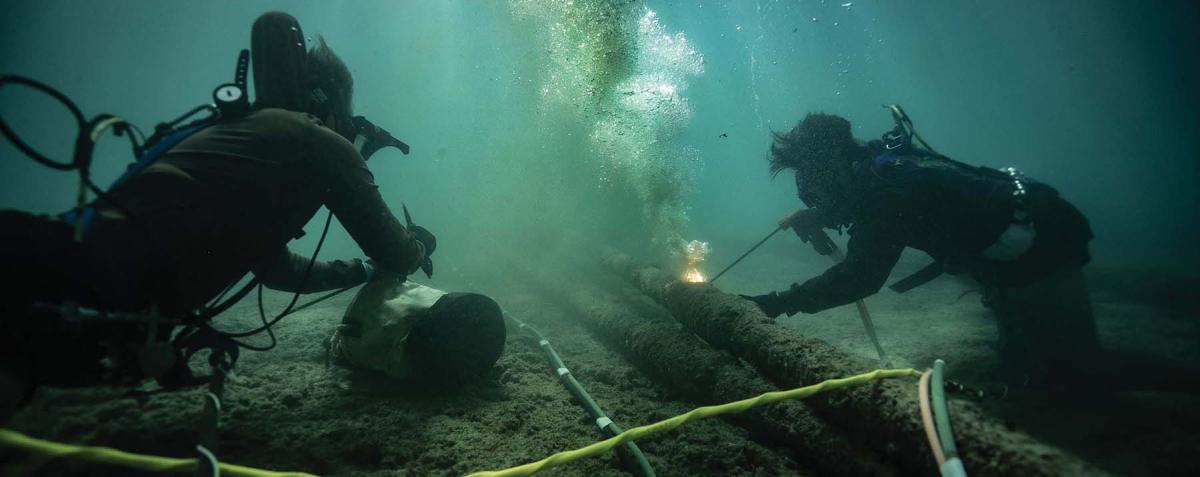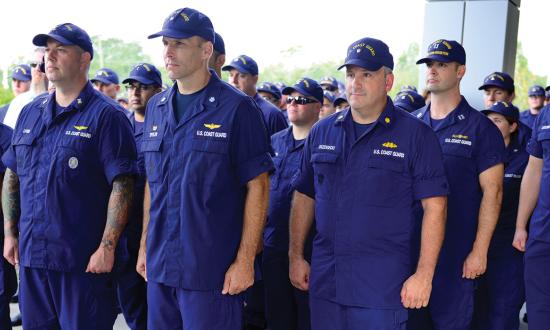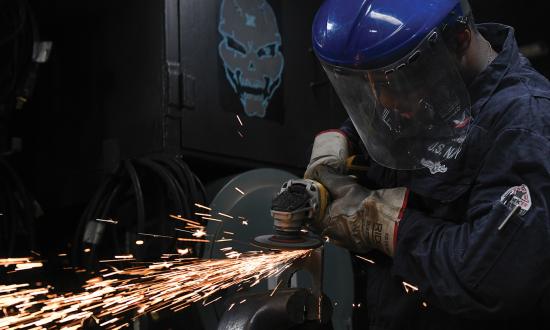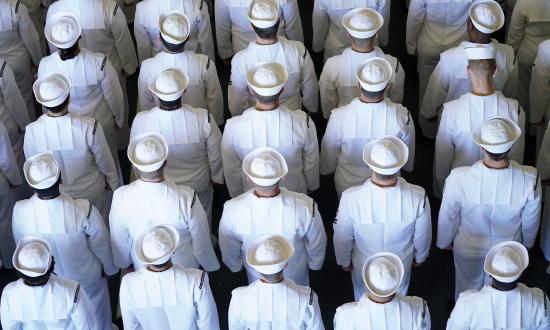With the Navy’s increasing reliance on technology and digital information sharing, the service is at a new horizon of innovation. Within this new era, naval leaders are struggling to create and foster a culture of constant education within the enlisted workforce. Initiatives such as Ready, Relevant Learning and the Naval Community College are examples of leaders’ efforts to increase the lethality of the enlisted ranks through continuing education. One area in which the Navy falls short is in its qualification of enlisted warfare specialists across the range of domains they represent.
In the era of great power competition, the Navy needs to change its architecture for warfare specialties.
Warfare Ownership
Currently, there are 11 enlisted warfare communities in the Navy, as outlined in Chief of Naval Operations Instruction 1414.9B. This instruction delineates the warfare sponsors within the Navy and directs that the “authority to establish additional programs remains with the CNO [Chief of Naval Operations].”1 Of the enlisted warfare communities, only three administer their warfare pins in a tiered system that progresses in complexity and supervisory responsibility over a career: the explosive ordnance disposal (EOD), diving and salvage (ND), and special warfare combatant craft crewman (SWCC) warfare specialties.
These three communities tier their warfare pins across three levels that mirror the apprentice, journeyman, and master levels of proficiency championed in Ready, Relevant Learning. These tiered levels also model other branches of the armed forces. The Navy should make every effort to shift other warfare areas to this tiered system.
An example for this change was made by the SWCC community in 2012. An article in Soldier Systems, “Rise of the SWCC Master,” released the same year, outlined the reasons for a warfare program to undergo an evolution in its qualification methodology. The decision was summed up best by a quote from then-Naval Special Warfare Command Master Chief Patrick Battles: “The main thing is that the qualification process is ongoing . . . it’s a continuous learning process and you always have to work at making yourself a better SWCC.”2
The SWCC community identified a deficiency in its warfare qualification program: It did not recognize the increasing levels of knowledge an operator accrues over time. Addressing this deficiency positively affected the special boat operator rating, as those sailors were able to incorporate their warfare specialty into their duty performance and career progression.
Competently Qualified
A sailor who works for a warfare pin is expected to learn a large amount of information, ranging from the operator, maintainer, and supervisory levels. This knowledge base can be distributed across a tiered qualification system. Trained sailors will be able to achieve a higher degree of proficiency when learning tasks suited to their skill level, while working toward the next career qualification milestone in either senior or master levels. This new approach also can overhaul the qualification board process, since warfare programs are managed under the respective type commander.
A tiered approach would enhance the agility with which warfare programs are updated moving forward. When major tactics, techniques, or procedures change, the current requirement is to update a warfare program only when enough time has passed for a statutory review. When personnel qualification standards programs cannot update quickly enough to remain relevant, warfighters are left playing catch up.
The overall purpose of a warfare program is to educate, evaluate, and qualify sailors as specialists in an area of war—future conflicts will not wait for the warfighter to change.
Onward and Upward
Tiered levels of mastery within warfare communities can be expanded to help ensure fit and fill are met more appropriately in the detailing process. Billets currently are codified by rate, rank, and a sailor’s skill captured in Navy Enlisted Occupational Standards (NEOCS). Warfare specialties combined with the detailing process, if updated, could help assign sailors to the commands where their skills and proficiency levels are needed most, and allow for greater upward mobility.
The process of determining Selective Reenlistment Bonus (SRB) incentives also could be aided with integration of warfare specialties into rated tiers. The EOD, SWCC, and ND communities currently use these warfare levels to help determine award levels, as well as to create the desire for further qualification within the ranks. Sailors who want to reenlist with an SRB currently rely on critical NEOCS, often driven by attendance at a selective school. Warfare qualifications would provide community managers with a window into how to shape their force through the proper distribution of SRBs across multiple award levels.
Finally, tiered warfare qualifications can be tied to advancement in rate. For example, the EOD community will invalidate a sailor’s chief petty officer exam results if he or she is not a master EOD technician. This may seem odd to the rest of the Navy; however, this practice ensures that senior enlisted leaders within the EOD rating are subject matter experts within their warfare area.
The fleet’s enlisted force must look inward at how the technical knowledge is vetted beyond Navy-wide advancement examination standards.
Create a Culture of Excellence
Sailors should strive to achieve excellence in their ratings and their warfare areas. This process of constant improvement breeds a culture that rewards learning and innovation in the pursuit of heightened lethality throughout the enlisted force. These pursuits do come at a price; it is not uncommon to see today’s sailors possess two, three, four, or more warfare specialties. Hard-charging sailors want to exceed the expectations of their chain of command while also increasing their knowledge for the future. These achievements, while notable, beg the question: Have sailors gotten that good at absorbing warfare knowledge, or have the warfare specialties become so watered down that sailors can collect them easily?
By redefining warfare specialist competency across multiple skill levels, the Navy can acknowledge the intellectual and practical mastery of enlisted sailors across the fleet. Tiered warfare qualifications could be used to incentivize knowledge across the force and inculcate improvement through constant education. Sailors want to be recognized for their hard work, skill, motivation, and knowledge in their rating and warfare areas. The Navy should allow them the honor of becoming masters of their craft by creating tiered qualifications that appreciate their commitment to duty and their courage to succeed.
1. Office of the Chief of Naval Operations, OP-NAVINST 1414.9B: “Navy Enlisted Warfare Qualification Programs,” 30 May 2019.
2. “New Special Warfare Combatant-Craft Crewman Badge,” Soldier Systems, 26 August 2016.






